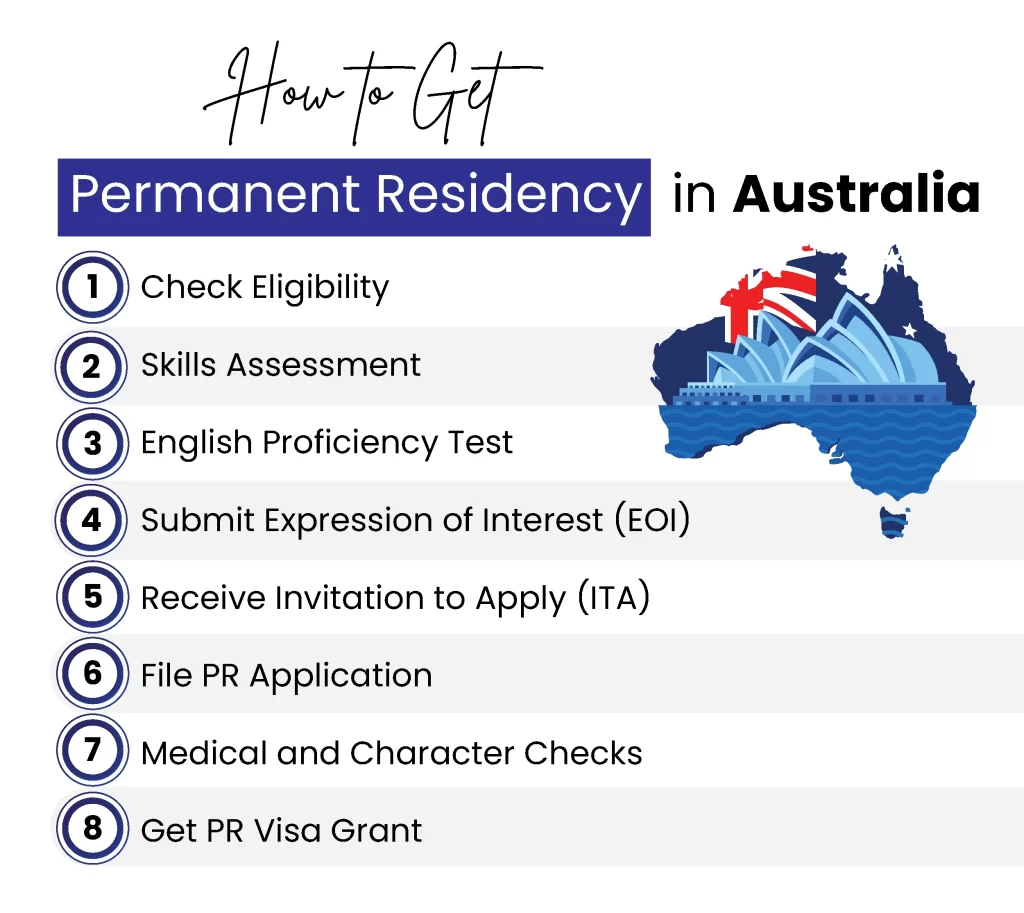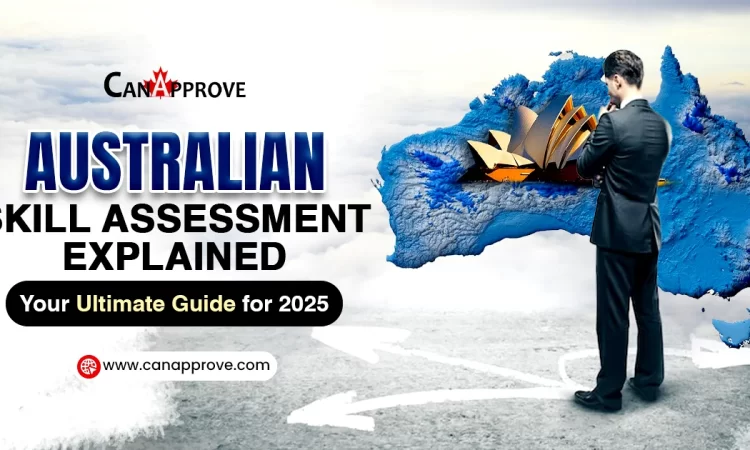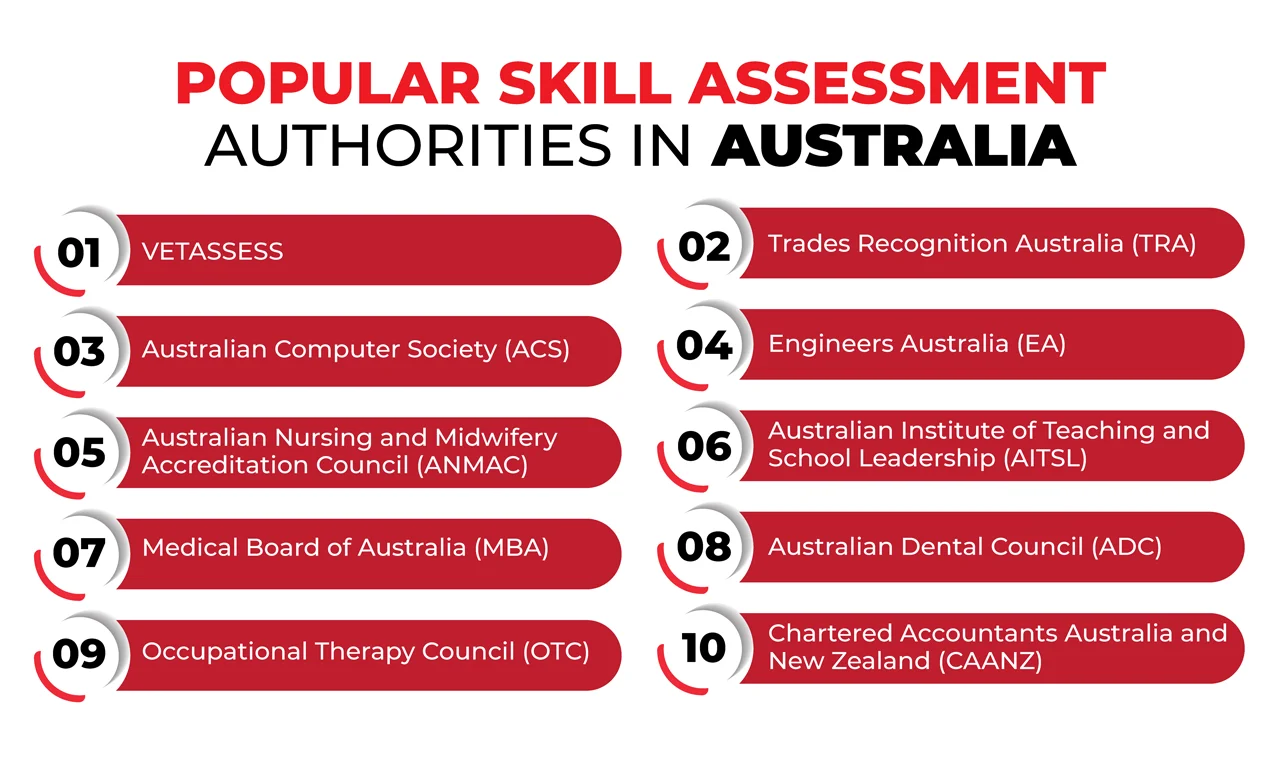Wondering how to get Permanent Residency in Australia? If this question has been on your mind, you’re in the right place, mate!
Without any introduction or any doubt, we can consider Australia is one of the best options to build your dreams, it never treats you as someone who comes from another country or continent. As well as for many people, the dream of living in Australia goes more than just a vacation or a temporary work visa. If you’re looking to spend the rest of your life in Australia, then permanent residency (PR) would be a brilliant choice. Permanent residency gives you the right to live and work in Australia indefinitely, and also it opens up a world of opportunities for you and your family.
Table of Content
1What is Permanent Residency in Australia2Pathways to Permanent Residency in Australia3Australia Permanent Residency Requirements4How to Get Permanent Residency in Australia5PR Point System in Australia6Australia PR vs Citizenship7Frequently Asked Questions
What is Permanent Residency in Australia
Australian Permanent Residency (PR) allows non-citizens to live, work, and study in Australia indefinitely. Understanding how to get Permanent Residency in Australia is essential. PR holders enjoy many benefits similar to citizens, including access to healthcare (Medicare), education, and the ability to sponsor relatives for Australia PR.
Pathways to Permanent Residency in Australia
Knowing how to get Permanent Residency in Australia involves exploring various pathways:
1. Skilled Migration Visas
- Subclass 189 (Skilled Independent Visa): For skilled workers not sponsored by an employer or state. It offers direct PR based on points.
- Subclass 190 (Skilled Nominated Visa): For skilled workers nominated by an Australian state/territory. PR is granted upon meeting state requirements.
- Subclass 491 (Skilled Work Regional Visa): A provisional visa for skilled workers who want to live and work in designated regional areas of Australia. Provides a pathway to PR after meeting residency and work requirements.
2. Employer-Sponsored Visas
- Subclass 186 (Employer Nomination Scheme): For skilled workers nominated by an Australian employer for permanent residency.
- Subclass 187 (Regional Sponsored Migration Scheme): For workers sponsored by an employer in regional Australia, offering australia PR.
3. Business and Investment Visas
- For individuals willing to invest, own, or manage businesses in Australia. It provides a pathway to PR for entrepreneurs, investors, and business owners.
4. Family and Partner Visas
- For spouses, partners, children, or dependent relatives of Australian citizens or PR holders. It allows family reunification and leads to PR.
5. Global Talent Visa
- Designed for highly skilled professionals in priority sectors like tech, science, and healthcare. It offers fast-tracked PR for globally recognized talent.
6. Regional Migration Visas
- Subclass 191 (Permanent Residence – Regional): For holders of certain regional provisional visas who have lived and worked in regional Australia for at least 3 years.
Australia Permanent Residency Requirements
Eligibility for Australia PR
To understand how to get Permanent Residency in Australia, you must meet these eligibility criteria:
- Be under 45 years of age
- Score at least 65 points on the PR points test
- Demonstrate competent English proficiency
- Obtain a positive skills assessment
- Fulfill health and character requirements
Documents Required for PR in Australia
Gathering the right documents is the next important step for :
- Valid passport
- Skills assessment report
- English proficiency test results
- Educational and work experience certificates
- Health and police clearance certificates
- Expression of Interest (EOI) acknowledgment
How to Get Permanent Residency in Australia

Here’s how to get Permanent Residency in Australia through a structured process:
1. Check Eligibility
Before starting the process, ensure you meet the basic eligibility criteria. Factors like age (usually under 45), educational qualifications, relevant work experience, and proficiency in English play a crucial role.
2. Skills Assessment
A positive skills assessment is vital. Apply to the relevant assessing authority that evaluates whether your skills match Australian standards for your nominated occupation.
3. English Proficiency Test
Demonstrate your English language ability by taking recognized tests like IELTS, PTE, or TOEFL. Achieving the required score boosts your chances of receiving an invitation.
4. Submit Expression of Interest (EOI)
Create and submit your EOI via the SkillSelect portal. Your EOI should include details about your skills, work experience, and qualifications. Higher scores increase the likelihood of an invitation.
5. Receive Invitation to Apply (ITA)
If your EOI matches Australia’s skilled migration needs, you’ll receive an ITA. Invitations are based on the points you score.
6. File PR Application
Submit a complete PR application along with the necessary documents within 60 days of receiving the ITA.
7. Medical and Character Checks
Undergo health examinations and provide police clearance certificates to make sure you meet Australia’s health and character requirements.
8. Get PR Visa Grant
Once your application is reviewed and approved, you’ll receive your PR visa, allowing you to live, work, and settle in Australia permanently.
PR Point System in Australia
Understanding the PR point system is essential for those exploring how to get Permanent Residency in Australia. Points are awarded based on:
- Age (Maximum 30 points)
- English Proficiency (Up to 20 points)
- Work Experience (Up to 20 points)
- Education Qualifications (Up to 20 points)
- Australian Study Requirement (5 points)
- Partner Skills (Up to 10 points)
- State Nomination/Regional Sponsorship (Up to 15 points)
Australia PR vs Citizenship
For those wondering how to get Permanent Residency in Australia, it’s important to understand how PR differs from citizenship:
| Feature | Permanent Residency (PR) | Citizenship |
| Voting Rights | Not eligible | Eligible to vote in elections |
| Passport | No Australian passport | Eligible for Australian passport |
| Government Jobs | Limited access | Full access |
| Travel Rights | Travel with PR visa restrictions | Full freedom of travel |
| Deportation Risk | Possible under certain conditions | No deportation risk |
| Sponsor Relatives | Can sponsor under some conditions | Can sponsor more easily |
| Time Outside Australia | Restricted for PR validity | No restrictions |
| Dual Citizenship | Not applicable | Allowed under Australian law |
Frequently Asked Questions
- Under 45 years
- 65+ points in the points test
- Proficient English
- Positive skills assessment
- Meet health and character requirements



